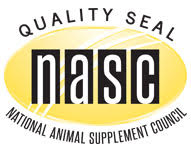You’ve just brought home a new puppy. Congratulations! Given proper care and respect, your dog will be your friend for life. Training your pet from the beginning can help strengthen your bond with your new dog and can also help ease your puppy’s transition into his or her new home. The following tips will help you get started with the training process.
Give Your Puppy a Name
One of the first things that your puppy should learn is his or her name. Establishing a name early will give you the ability to call your puppy to your side and will help your puppy understand when he or she is being addressed directly. You can name your pet anything you want, but the best names are those that consist of few syllables and at least one strong consonant. Make a point of calling your puppy by name until your he or she understands its meaning.
Establish House Rules From the Beginning
If you plan to keep your puppy out of certain rooms or off of your furniture, establish these rules from the beginning. Once the rules have been established, tell your children and other adults in the house. Ensuring that all members of the household know and follow these rules consistently will your puppy learn more quickly.
Be Consistent
Repetition is key to training puppies. Correcting undesirable behavior and praising desirable behavior is most effective when it’s done consistently. This will help your puppy learn more quickly and will ensure that the lessons are more firmly planted in your puppy’s brain.
Consistency can also have a calming effect, because puppies like predictable situations. Keeping training consistent from one day to the next will help your puppy feel safe and secure.
Praise Good Behavior
Praising good behavior is a good way to communicate your desires to your new pet. If your pet does something desirable, even if it’s small, tell your puppy that he or she is “good.” Use this same word consistently so your pet will understand its meaning, and keep your tone soothing and kind. During training sessions, use this word accompanied by treats to reinforce your puppy’s good behaviors.
Establish a Going Out Routine
House training can be tricky. Provide ample opportunities for your puppy to do “business” in the yard. Take your pet out to the yard regularly throughout the day, and if possible, guide your puppy to the same location each and every time. When your puppy does his or her business in the correct location, praise your pet gently.
Train Your Puppy on the Leash
Puppies must be trained to accept a leash and go for a walk. To start, put your pet on a collar and leash and let him or her drag the leash around. This will help your puppy become comfortable with the leash. Supervise this activity carefully to prevent the leash from becoming tangled in the furniture.
The veterinarian may recommend that you wait until your puppy is vaccinated before bringing him or her out for a walk. If this is the case, you may practice going for walks indoors or in your back yard. Start by leading your pet around in little circles on the leash. It’s important to be the leader when you walk. If your puppy starts to lead, turn around and head in the opposite direction. Practice this in your home and backyard until your puppy is vaccinated and can go for a walk outside.
Contact the National Animal Supplement Council
The NASC is a strong advocate for use of pet supplements. We believe that pet supplements can help keep your pet healthy and can improve your pet’s quality of life. To support our cause, join us today.
The NASC Quality Seal
The goal of the National Animal Supplement Council (NASC) is to promote the health and well-being of companion animals and horses that are given animal health supplements by their owners, and to protect and enhance the integrity of the animal health product industry. When you see the NASC Quality Seal on animal health supplements, you can trust you are buying from a reputable company that has successfully completed an independent quality audit and has complied with rigorous requirements necessary to gain permission to display the Quality Seal. To learn more, and to access meaningful information on all aspects of health and wellness for dogs, cats and horses, visit AnimalHealthLive.com.



